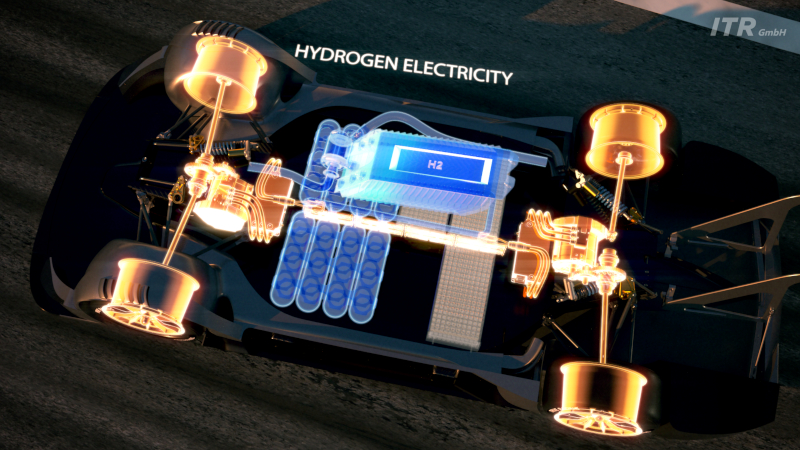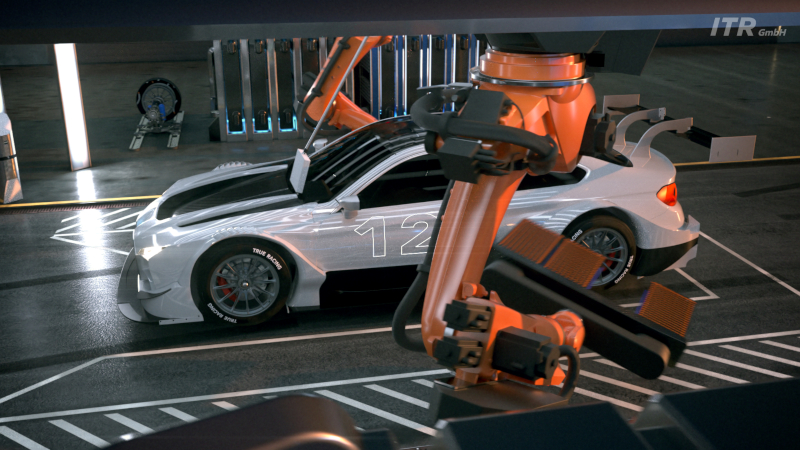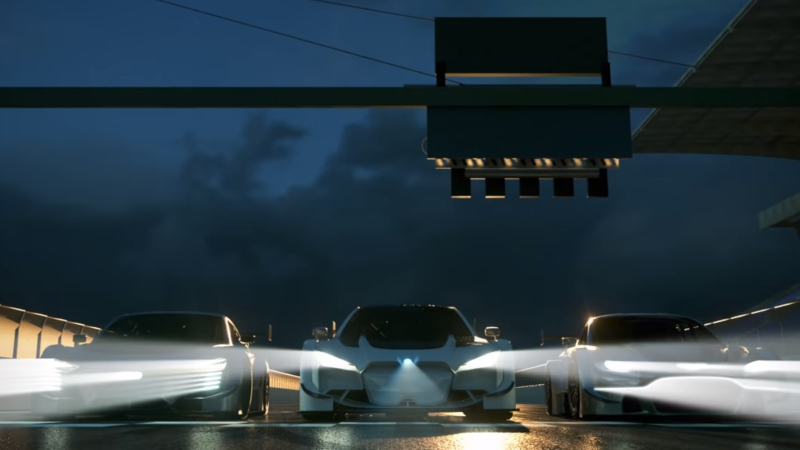ITR GmbH, the promoter of the DTM, has presented its vision of how the future of touring car racing could look, featuring a high-performance electric touring car series capable of over 300 kph and featuring robotic pit stops.
The cars could be powered by batteries or by hydrogen fuel cell technology, whilst the series could run alongside the current DTM in the future.
The option of a hydrogen fuel cell would still make it an all-electric series, as the gas is used to generate the electricity to power the on-board motors, rather than carrying the weight of lithium-based batteries.
Pit stops would feature large industrial robots which could replace all four wheels as well as remove and replace the battery packs to allow for 40-minute races to be staged.
ITR also says that the cars would be capable of more than 1,000 bhp power outputs, with top speeds achieving in excess of 300 kph (185 mph).
“This is a courageous and innovative concept”, said ITR Chairman Gerhard Berger. “You have to look far ahead if you want to shape the future of motor sports and offer racing with alternative drive systems that inspires the fans.
“It is obvious that manufacturers who want to become involved in motorsport are increasingly focusing on alternative drive concepts.”
The potential new series would not replace DTM, with ITR envisioning that the manufacturer-backed series could run alongside the current tin-top series.
The promoter continues to develop a detailed feasibility study into the concept, consulting key suppliers.

The DTM already has plans to introduce hybrid power for the 2022 season, whilst the series has trialled running a more “environment-friendly” high-performance fuel.
In order to keep costs down for the possible new series, a single-source supplier would most likely be employed, with ITR admitting that “such a technology project could only really be made feasible via collaboration” in such a way.
Like with other electric motorsport series, including the planned new-for-2020 E-TCR series, the electric drive system, including motors, electronics and battery, would be largely standardised, although some engineering freedom would be permitted.
ITR believes that having high-performance electric cars capable of over 300 kph would make the series attractive to manufacturers, rather than series such as Formula E, where the cars are slower and do not resemble the brands product line.


ITR has cautioned on the implementation of the series, however, stating that its introduction depends on three factors:
“Technical feasibility: while the tech is achievable, it needs to be balanced against the requirements of a racing series. Any technical implementation must not come at the expense of the show or the speed of the car.
“Financial viability: a glide-path to all new regulations must be agreed upon, and the strain of preparing and implementing these changes must not be overwhelming
“Fan, manufacturer and sponsor interest: any changes must be for the benefit of the sport and its chief stakeholders. If a joint vision is agreed upon, then a way forward can be found.”
Berger says that he feels a ‘new and inspiring’ concept has been lacking on the sporting side of the automotive sector, with the DTM ‘sister series’ hoping to capture that market.
“The DTM is a professional, international motor sports platform for vehicles with a clear connection to series models,” said Berger. “It has existed for more than 30 years, is highly popular and has strong traditions.
“You have to look far ahead if you want to shape the future of the sport. Although hybrid and electric vehicles have established a foothold in the market, I think that a truly new and inspiring concept has been lacking up until now.
“In addition to millions of motorsport fans worldwide, we’re now talking with a large number of automotive companies and suppliers who would like to become more involved in motorsport.
“With this project, we want to demonstrate that we’re open to what the future holds and that we have something new to offer the world’s manufacturers.”

